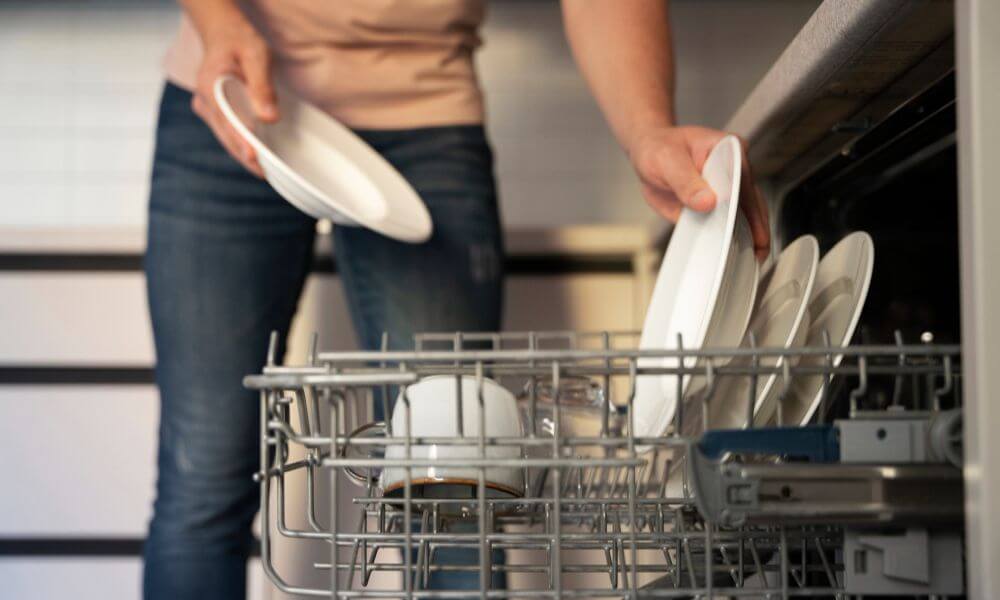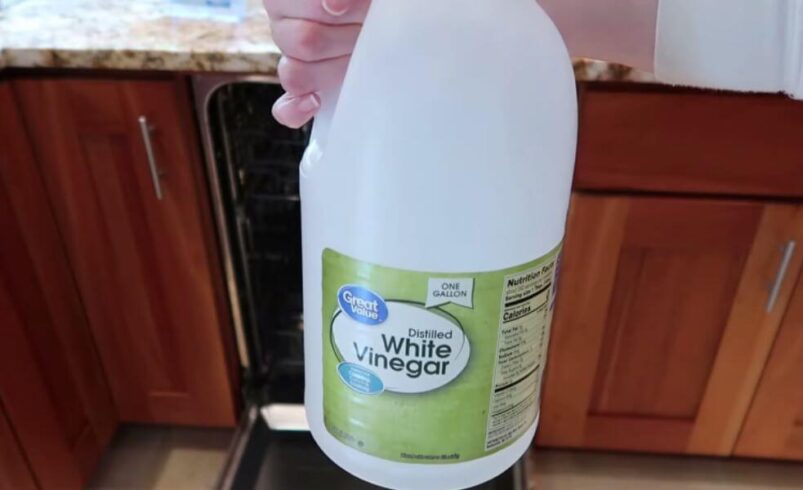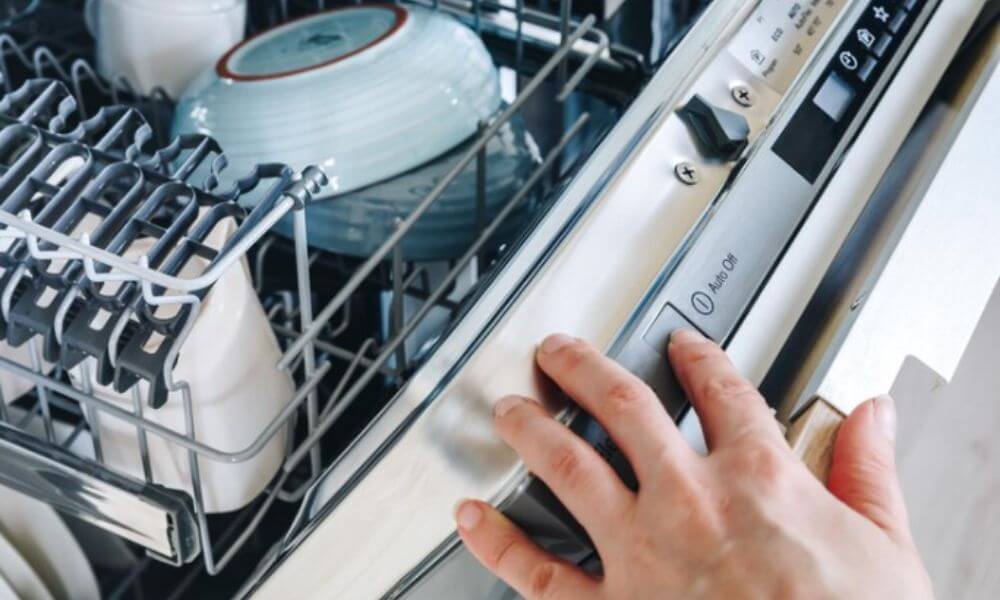How Much Water Does Dishwasher Use? How to Increase Efficiency


Every drop counts in a world of water scarcity and environmental concerns. Regarding household water consumption, dishwashers often stand in the spotlight, accused of being water guzzlers. But is this perception accurate? Or is there more to the story of dishwasher water usage?
Join us as we delve into the world of dishwasher water consumption, unraveling the facts from the myths and unveiling water-saving strategies that will transform your dishwasher into an ally in your quest for environmental sustainability.
How Much Water Does a Dishwasher Use: A Detailed Breakdown

Unveiling the Water Consumption of Dishwashers: A Tale of Two Eras
The amount of water a dishwasher consumes can vary significantly depending on age and model. Older dishwashers manufactured before 1994 were notorious for their water-guzzling habits, often consuming 9 to 14 gallons of water per load. This staggering amount was a major contributor to household water consumption, raising concerns about environmental impact and water scarcity.
In response to these concerns, stricter water-efficiency standards were implemented in 1994, mandating that all dishwashers manufactured after that date use no more than 5 gallons of water per cycle. This significant change marked a turning point in dishwasher technology, ushering in a new era of water-efficient appliances.
Factors Influencing Water Usage: A Deeper Dive
While the average dishwasher uses around 6 gallons of water per load, many factors can influence this number. The type of cycle selected, ranging from light washes to heavy-duty cycles, plays a significant role. Longer cycles with higher temperatures naturally consume more water to achieve thorough cleaning.
Dishwasher size also contributes to water usage. Larger dishwashers, designed to accommodate more dishes, typically use more water than their compact counterparts. This is because they require more water to fill the larger tub and ensure effective cleaning throughout the appliance.
Loading patterns also have a surprising impact on water consumption. Overloading a dishwasher can lead to inefficient water usage, as the tightly packed dishes may obstruct the water spray, preventing thorough cleaning and necessitating additional cycles. Conversely, underloading a dishwasher also wastes water, as the appliance uses the same amount of water for a half-full load as it would for a fully loaded one.
Water-Efficiency Ratings: A Beacon of Efficiency
In the pursuit of water conservation, Energy Star emerged as a guiding light, establishing stringent water-efficiency standards for dishwashers. Energy Star-certified dishwashers must meet specific water consumption requirements, ensuring they use less water than conventional models without compromising cleaning performance.
These certified dishwashers typically consume around 4 gallons or less of water per load, representing a significant reduction compared to older models. Consumers can contribute to water conservation efforts by opting for Energy Star-certified dishwashers and saving money on their water bills.
Water-Saving Strategies: Transform Your Dishwasher into an Eco-Ally


To minimize water consumption and embrace environmental sustainability, dishwashers can be transformed from water guzzlers into eco-friendly allies. Adopting simple yet effective water-saving strategies can significantly reduce your dishwasher’s water footprint and contribute to a greener planet.
Harness the Power of Full Loads: Maximize Efficiency
One of the most impactful water-saving strategies lies in maximizing load size. Dishwashers are designed to operate efficiently when fully loaded. Running a half-full dishwasher wastes the same amount of water as a full load, leading to unnecessary water consumption.
Therefore, practice waiting until you have a full load of dishes before running the dishwasher. This simple adjustment can significantly reduce water consumption and reduce environmental impact.
Pre-Rinsing: A Myth or a Necessity?
Pre-rinsing dishes before loading them into the dishwasher is common, but is it necessary? The answer is a resounding no. Modern dishwashers are designed to clean dishes without the need for pre-rinsing effectively. Pre-rinsing can save up to 20 gallons of water per load, rendering it an efficient and wasteful practice.
Instead of pre-rinsing, scrape off any excess food scraps into the trash bin. The dishwasher’s powerful water jets and detergent will do the rest, ensuring your dishes emerge sparkling clean.
Embrace Water-Saving Features: Innovation at Your Service
Modern dishwashers are equipped with various water-saving features that further enhance their efficiency. These features, often overlooked, can make a significant difference in reducing your water consumption.
One such feature is the water-sensor cycle, which automatically adjusts the water usage based on the load size. This feature eliminates the need to guesstimate the water required, ensuring optimal water usage for every load.
Another innovative feature is the soil sensor, which detects the level of soiling on the dishes and adjusts the wash cycle accordingly. This feature prevents unnecessary water consumption on lightly soiled dishes while ensuring thorough cleaning for heavily soiled ones.
By embracing these water-saving features, you can maximize the efficiency of your dishwasher and minimize its environmental impact.
Handwashing vs. Dishwashing: A Water Usage Showdown
Water consumption often takes center stage in the age-old debate of handwashing versus dishwashing. The perception that handwashing is the more eco-friendly option is widespread, but is this perception accurate? Let’s delve into the facts and uncover the water usage implications of each method.
Handwashing: Unveiling the Water Footprint
Handwashing dishes, while seemingly simple, can be surprisingly water-intensive. Studies have shown that handwashing can consume an average of 20 to 30 gallons of water per load, significantly exceeding the water usage of modern dishwashers.
This discrepancy stems from the tendency to leave the faucet running while scrubbing dishes and rinsing them individually. This continuous water flow, often unnecessary for effective cleaning, contributes to the substantial water consumption associated with handwashing.
Dishwashing: Unveiling Efficiency in Action
In contrast to handwashing, dishwashers have undergone significant advancements in water efficiency, making them a more sustainable option for dishwashing. Modern dishwashers, particularly those with Energy Star certification, can consume as little as 4 gallons of water per load, a remarkable reduction compared to handwashing.
This impressive efficiency is achieved through a combination of factors, including targeted water spraying, efficient water recycling systems, and optimized cycle design. Dishwashers can clean dishes thoroughly while minimizing water consumption, making them a more water-friendly choice.
Environmental Impact: Handwashing vs. Dishwashing
The environmental impact of water consumption is a pressing concern. With water scarcity becoming a global issue, reducing water usage is crucial for environmental sustainability.
In this context, dishwashers emerge as the clear winner regarding environmental impact. By consuming significantly less water than handwashing, dishwashers contribute to water conservation efforts, reducing the strain on water resources and minimizing the environmental footprint of dishwashing.
Individuals can play a direct role in conserving water and promoting environmental sustainability using dishwashers. This simple shift in dishwashing habits can make a significant difference in preserving precious water resources for future generations.
Conclusion
As we conclude our exploration of dishwasher water usage, a clear message emerges: dishwashers, when used efficiently, can be powerful allies in our quest for water conservation and environmental sustainability. We can transform our dishwashers from water guzzlers into eco-friendly appliances by adopting simple water-saving strategies, such as maximizing load size, avoiding pre-rinsing, and embracing water-saving features.
Every drop counts in a world increasingly concerned with water scarcity and environmental impact. We can collectively reduce our water footprint and contribute to a more sustainable future by making conscious choices about our dishwashing habits. Let’s embrace the efficiency of dishwashers and embark on a journey towards water-conscious dishwashing, one clean dish at a time.





